CHICAGO ARCHAEOLOGY SOCIETY
ONLINE CODEX
September 2014

CHICAGO ARCHAEOLOGY SOCIETY
ONLINE CODEX
September 2014
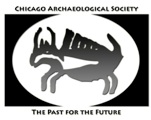
Edward Barna Kurjack
1938 – 2014 In Memoriam
The Chicago Archaeological Society was saddened by news of the passing of their friend Dr. Edward B. Kurjack on August 2, 2014. Professor Kurjack, Ed to friends and associates, was indeed a valued and sincere friend of the CAS who was a frequent presenter before the CAS. He always declined any honorarium even refusing reimbursement of travel expenses from Macomb or Florida! An early check cut in Ed’s favor went uncashed.
Although a nationally recognized Mayanist, Ed’s archaeological/anthropological interests spanned the globe including Greece and Italy, Egypt which began with his investigations in the Philippines as a graduate student.
CAS travelers accompanying the MexiMayan travel adventure last March 2013, “Searching for the Maya,” had the special privilege of sharing Ed’s depth of understanding of the Maya and the Dzibilchaltún Site. At that time, in an underground tunnel below a Maya ceremonial platform, he
presented an impromptu lecture that explained the importance of stelae fragments, intentionally destroyed and serving as part of the foundation of the structure above. Among his audience were CAS members Sally Campbell, Marcia Streetman and Ronald Albiani.
Ed traveled with the 2013 Mexi-Mayan Yucatan travel adventure as a special consultant. In failing health he struggled with the rigors of an active tour without complaint. It would be his final presentation and contribution to the CAS,
For the reader who missed the May 2012 meeting or for those who wish to review Ed’s final bow, the CAS DVD is available on loan.
Our Next Meeting
Sunday, September 28, 3:00 PM
“Petitioning the Gods in Times of Drought: Ancient Maya Pilgrimage at the Cara Blanca Pools, Belize”
Dr. Lisa J. Lucero
Evanston Public Library,
1703 Orrington Av,
Evanston, Illinois
Dinner: 5:00 p.m. Informal dinner with our guest speaker at Dave’s Italian Kitchen.
The CAS will open its 2014-15 lecture season on September 28 when guest lecturer, Dr. Lisa J. Lucero, escorts us into the lost world of the Belizean Maya. Because so much of the Maya glyphs are known, we know more about the Maya and their culture than any other New World Pre-Columbian culture. We know more about the cities than remote ceremonial centers such as Cora Blanca, and Dr. Lucero is filling in many missing pieces of the Maya mosaic. Dr. Lucero will open new perspectives on an ancient Maya landscape that was imbued with sacred, animate qualities, which the Maya either left untouched or transformed using established customs. Of particular significance were openings in the earth, such as caves and pools, which the Maya considered portals to the underworld. They would leave offering at openings and petition gods, ancestors and other supernatural entities for plentiful rain and bountiful crops.
Cara Blanca in central Belize is such a place with its 25 pools. Their isolation from settled communities and the relatively sparse but unique architecture near pools, such as water temples and sweat baths, suggest that Cara Blanca served as a pilgrimage destination.
Growing evidence from exploratory dives and excavations at a temple at the edge of one of the pools indicate that the Maya increased their visits to Cara Blanca in response to a series of prolonged droughts that struck the Maya area between c. 800 and 930 C.E.
In addition to yielding information on ancient Maya pilgrimage, water ceremonies and sacred geography, pools also yield information about rainfall patterns and landscape transformation.
Personal memories:
An effective teacher at some time told you something about the past that made you wonder about how people survived in the past. Dr. Lisa Lucero had too many unanswered questions. She decided to become an archaeologist and her non- academic parents supported her decision. Today she is a professor at the University of Illinois at Urbana-Champaign, continuing her search and inspiring her students. You can google Dr. Lucero and find information about her Maya studies and excavations in Belize. You can find her abstracts online too.
Since the mistaken idea that the Maya predicted the end of the world in 2012 made headlines, curiosity about the mysterious Maya has increased. People questioned “did they die out?” There are millions still living in villages and farming their milpas (corn fields). What did die was a hierarchal system with a bloated ruling class who told the people when to plant and when to harvest. They made the rules about their lives and how to appease the gods.
Years ago Bob and I lived in a Maya village in the Yucatan with students, to study the Mayas. These Mayas must have been descendants of ancient Maya who lived near sites such as Ek Balam. They probably were farmers
because that was what they were when we stayed with them. When the ancient hierarchical system broke down, their ancestors left and found places to live together co -operatively.
What did they do if they guessed wrong and the rains did not come after the seeds were planted? They did a ritual. We learned that it had happened to these village farmers at least once. They gathered their sacred objects and the gifts to the gods and went to a certain place and set up their table. Four boys assumed the role of frogs at the table’s corners and made frog noises all night. One of the elders decided to ask the priest if they could borrow the small carved saints from the church. The priest said no; but they borrowed them anyway. And what happened? It rained, of course.
What they did in that village, may or may not, have much to do with what actually happened in ancient times. And it may, or may not, have little to do with what happened in a remote village in Belize where Dr. Lucero has been working. And Dr. Lucero has been working with archaeological tools to answer many nagging questions. We are wondering. What did they do when there was a drought? What did Dr. Lucero discover?
Deb Stelton
THE PALIMPSEST
by
Bob Stelton; Editor
Welcome back from Summer albeit we have several week before the onset of Fall.
We left May with a compelling talk by Dr. Lynne Goldstein to misnamed Aztalan which has nothing to do with Aztecs but much ado with the Mississippians.
Dr. Goldstein brought the CAS up- to-speed subsequent to the CAS 2011 Summer Safari. According to Dr. Goldstein Aztalan has emerged as a significant site.
The 2014 Summer Safari plans were considering the Fort St. Joseph, Niles Michigan site as a natural follow-up to Dr. Michael Nassaney’s introduction to this late 18th century frontier fort that had witnessed such historic events as the Conspiracy of Pontiac.
Unfortunately we had to change planes because of the temporary 2014 hiatus at the site.
The change of plans kept the CAS in the region, but instead we went to the Snite Museum of Notre Dame University. Members may recall the May 2010 presentation by Mr. Douglas Bradley, Curator at the Snite, and his warm welcome to visit the Snite. Unfortunately our visit comes after the passing of Mr. Bradley, nevertheless our visit to the Snite was warmly received. The museum houses a vast collection of Meso American and South American art.
Some CAS members completed a summer of discovery with a visit to Nashville, Tennessee to explore the remarkable (remarkable because of
The Parthenon Athens, Greece
the recreation of a towering Athena within the temple) 1-to-1 copy of the Athenian Parthenon. MexiMayan Tours will visit the Athens, Parthenon in October for information you may call 630 972- 9090.
Until October....
Bob Stelton, editor
CALENDAR OF SPECIAL CHICAGO EVENTS
October 25, 2014 through April 26, 2015
Field Museum, Opening Exposition “Vodou (Vodoo and its art)”
Special Exhibit Opening: April 7, 2014 to January 4, 2014
Oriental Institute,
“In Remembrance of Me: Feasting with the Dead in the Ancient Middle East”
October 2, 7:00 PM
Oriental Institute
“Why the West Rules — For Now: The Patterns of History, and What They Reveal about th Future”
Ian Morris
773 702-9514.
MID-WEST AREA ANCIENT AMERICAS ARCHAEOLOGICAL LECTURES AND CONFERENCES
October 1, 7:00 PM
Illinois Valley Archaeological Society Lecture
"Technological and Social Dimensions of Late Prehistoric Pottery: A Central Illinois River Valley Case Study"
Andrew J. Upton, Doctoral Student, Michigan State University and an R. Bruce McMillan Museum Intern
This presentation will discuss two relevant issues to the study of Late Prehistoric period (circa 1100-1550 AD) pottery in eastern North America: the technological ramifications of the shift to shell tempering and modern theoretical and methodological means of understanding the social contexts of pottery manufacture, use, and exchange.
The Illinois State Museum—Dickson Mounds is located between Lewistown and Havana off Illinois Routes 78 and 97.
www.ExperienceDicksonMounds.com
October 2-4
2014 Midwest Archaeological Conference
The MAC 2014 meetings will be held Thursday through Saturday evening at the Hilton Garden Inn just west of the University of Illinois campus. Room blocks are reserved at both the Hilton as well as Hawthorne Suites located across the street from the Hilton. The conference room rate is $109/night at both locations. When making reservations, please use the Group code 'MAC14' to ensure you receive the conference rate.
We are urging all conference attendees to reserve your hotel rooms as soon as possible since the U of I football schedule changed shortly after we had finalized the contract for the conference and this weekend is now a home football weekend. We will be sending out reminders periodically as we move closer to the conference dates.
GROUP CODE: MAC14
Hilton Garden Inn
1501 S Neil St
Champaign, IL 61820
(217) 352-9970
Hawthorne Suites
101 Trade Center Dr,
Champaign, IL 61820
(217) 398-3400
http://www.midwestarchaeology.org/annual-meeting/upcoming-meetings
You can keep up with archaeology events with these links:
CAS: www.chicagoarchaeologicalsociety.com/
Facebook: facebook.com/ChicagoArchaeologicalSociety
Chicago Archaeological Society Online Codex:
For calendar items, please call Bob Stelton;
630-972-9090
Inclusion deadline is the last Friday of the month
Oriental Institute, Breasted Hall
TEL: (630) 972-9090 e-mail: meximayan@meximayan.com
WEBPAGE: http://chicagoarchaeology.org or
Chicago Archaeology Society Online Codex
Feedback;
UPCOMING CAS LECTURES
September 28, 2014;
“The Ancient Maya”
Dr. J. Lucero
October 26, 2014
“World War II POW Camps.”
Mr. James Meierhoff
November; TBA
December 7, 2014
“Kingdom of Kush”
Dr. Bruce B. Williams
January; TBA
February 22, 2015
"The Marvels of Mud: Using Lake Sediment Cores to Uncover the Ecological History of the
Cahokia Region."
Mr. Samuel E. Munoz
March 29, 2015
"The End of Prehistory: A Historian's Perspective on America's Ancient Past."
Dr. Christina Snyder
April 26
TBA
Mr. Brian Adams
May 17, 2015
TBA
All Lectures (unless otherwise indicated) are at
The Evanston Public Library
1703 Orrington Avenue
Evanston, Illinois
(Always Plenty of Free Parking)
CAS Officers and Board
President Raymond Young
Vice President
Lucy Kennedy
Secretary & Newsletter
Editor
Robert Stelton
Treasurer
Michael Ruggeri
Director Judith Greene Director Peter Greene Director Jeanne Jesernik
Director Ronald Albiani Director Jean Dunkerley
Director Lynn Miller
Director Nancy Podwika
Director Kathy Pratt
Director Jeanne Zasadil
Director Jacqueline Leipold
Director Kendra Massey Director Doreen Stelton
Director Sandra Boots Director Sally Campbell Director Edward Lace Director Edith Castro-Young
Director Karen Memory Director David Zucker
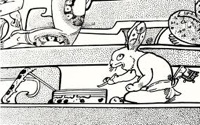
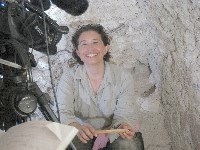
LISA LUCERO
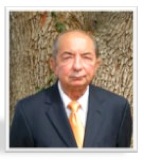
ED KURJACK
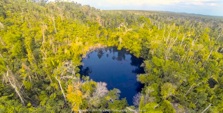
DRONE VIEW OF THE RATH POOL

WATER TEMPLE BY RATH POOL